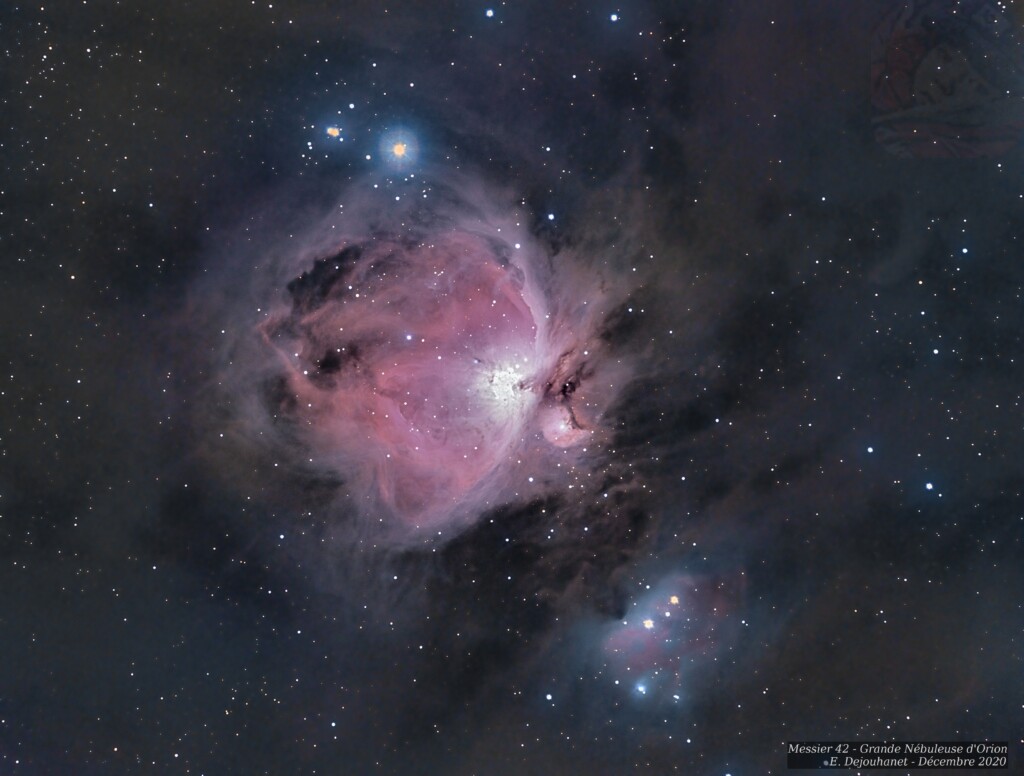M42 – Orion Nebula
Given the amount of pictures on social networks, capturing and processing this famous nebula has become quite demanding. This target is visible during the cold season in the Northern hemisphere, from November to end of February in my backyard, counting roofs and vegetation. What makes this object difficult is the luminosity contrast: the center cluster very easily saturates, while a tremendous amount of dust filaments wait in the shadows.

The Orion Nebula is a very small part of the huge Orion Cloud, and is the most luminous deep-sky object of the Northern skies: it can often be seen with unaided eyes in a countryside sky, just like the Andromeda Galaxy. It center hosts a cluster of young stars, the Trapezium Cluster.
I used 2 hours of 60-second R, G and B frames to gather colors, and 2.5 hours of 300-seconds H-alpha frames to improve the overall luminance and emphasise dust clouds. My intent was to also use 60-seconds H-alpha frames to improve the center cluster, but it appeared sixty seconds were too much to get a pleasant result. Besides, I was not very experienced with the HDR combination in PI, so I let it go for this attempt.
The exposures were all managed by KDE KStars, with the Atik Horizon 2 on the Orion ED80T and HEQ5-Pro. All processing done with PixInsight 1.8.